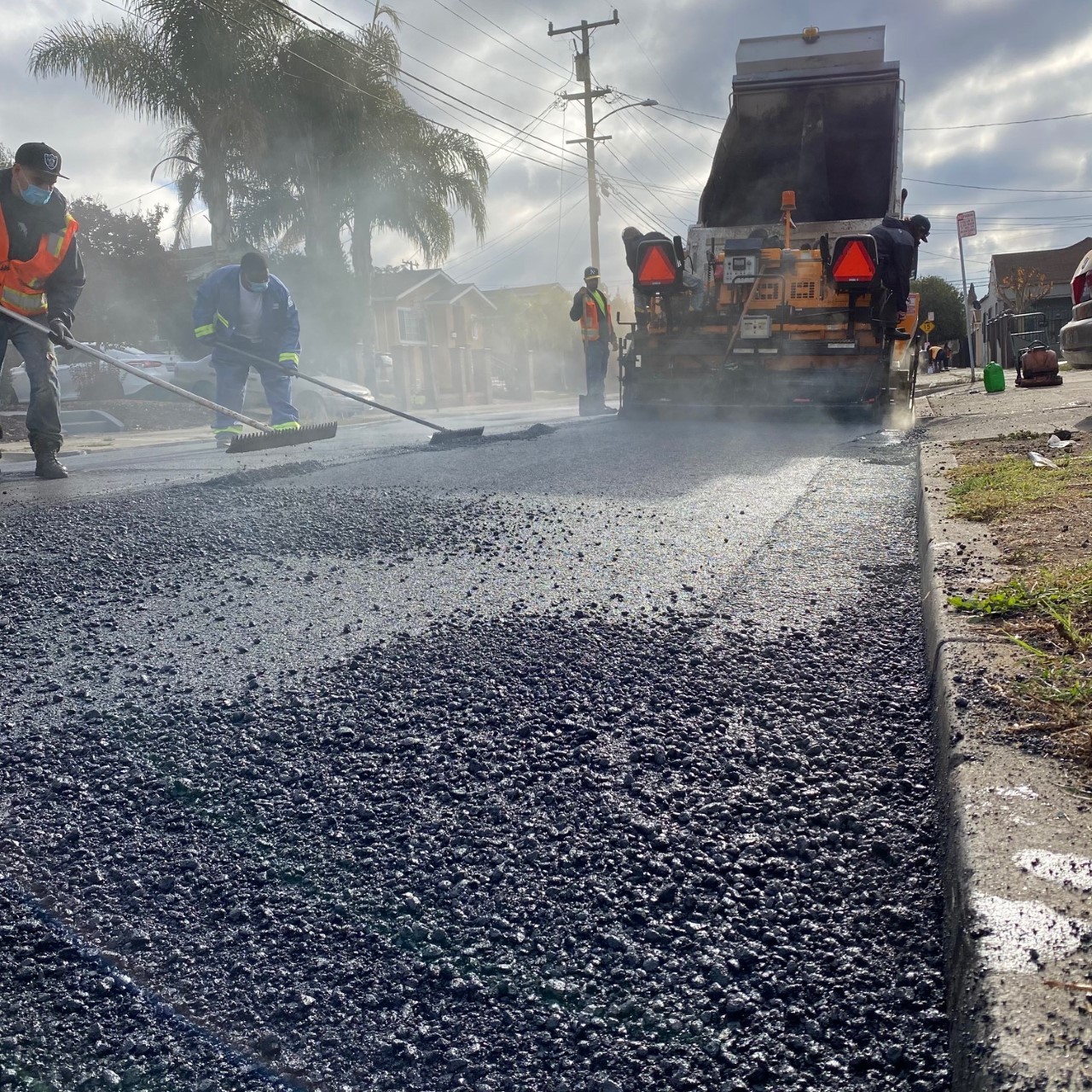Just over a year ago, the City of Oakland Department of Transportation (OakDOT) kicked off three years of ramped-up street paving with a major street repair campaign focusing on local neighborhood streets and historically underserved neighborhoods. Thanks to the dedication of essential workers who have delivered paving work and other vital services throughout the pandemic, the plan is off to a roaring start: the City announced Monday it has paved 39.4 miles since July 1, 2019.
This work included a new record: during the first year of the plan, OakDOT set a new annual record for paving, with a total of 32 miles paved between July 1, 2019 and June 30, 2020. Since then, crews paved another 7.4 miles, adding up to the 39.4 miles to date.
“Oakland workers are as dedicated and hardworking as they come – which is why we’re celebrating a record year of street paving today,” Mayor Libby Schaaf said. “Despite the challenges of the COVID-19 pandemic, our first-ever Department of Transportation created new and nationally-recognized approaches to equity and street management, and safely delivered a historic amount of new street paving and sidewalk repairs. As we head into a season of gratitude, we thank and celebrate Oakland’s essential workers who have been working hard for our residents every day.”
“We’re proud to be delivering for Oaklanders, particularly those in long neglected neighborhoods, something they have always deserved, the dignity of safe and smooth streets and sidewalks,” OakDOT Director Ryan Russo said. “The hardworking crews that are out there making it happen are a daily inspiration to us all and a reminder of that clarion call to service that unites all Oaklanders. Our crews have braved the pandemic, and Oaklander have helped keep them safe by minimizing travel and gathering, please keep it up. These safer, smoother streets and sidewalks are all possible because Oakland voters agreed to support these workers and these services with the landmark Measure KK, so we also recognize and thank our community for making the investment in the crews out here getting it done.”
Additionally, and importantly, the City of Oakland saw more than 100,000 square feet of sidewalk repairs from July 1, 2019 to June 30, 2020 – which also set a new record! Sidewalks are especially important for keeping seniors safe and providing mobility access to persons with disabilities.
Measure KK, passed by Oakland voters in 2016, provides $350 million in bond funding over a ten-year period to repair Oakland roads. In May 2019 the City Council adopted a paving plan OakDOT developed to put Measure KK funds to work, and that plan kicked off in earnest on July 1, 2019.
For a detailed update on the Plan’s work so far, please see the storymap OakDOT has shared online at https://storymaps.arcgis.com/stories/f598b414ab374cb6b8104f932b3cc776.
How streets were selected: in 2018 the City performed a survey of every street in Oakland to get updated information about each street’s condition. Additionally, both Measure KK and City Council's adopted prioritization process direct staff to consider equity and safety factors in spending. To add these factors to the paving program, OakDOT prioritized major streets by street condition and crash history, to keep major streets in good condition, and frontload safety improvements on the streets where the most fatal and severe crashes occur.
For local streets, OakDOT organizes its paving interments through nine planning areas – geographic segments that cover all of Oakland, and which are larger than neighborhoods but smaller than Council districts. The plan divides the $75 million in local streets repaving into these areas, weighing two factors: (1) the proportion of poor-condition local streets each area contains, and (2) the proportion of Oakland’s historically underserved communities that live in each area. These two factors – street condition and equity – are weighed equally and each area gets a share of the local streets funding according to that result.
To select individual streets, OakDOT first identified the worst streets near schools, and then prioritized the worst-condition streets in each area. The final list of streets was included in the plan when Council adopted it in may – that list is online in map form at https://www.oaklandca.gov/projects/2019-paving-plan.
Despite the advances of the paving plan, there are far more streets in need of repair than resources to immediately provide that repair. Residents are encouraged request infrastructure maintenance services and report problems through any of the following means:
- Phone: Call 311 from any phone within Oakland. (If calling from outside Oakland, use the number 510-615-5566.)
- E-mail: OAK311@oaklandca.gov
- Web: 311.oaklandca.gov
- Mobile App: OAK 311, available free for Apple and Android smart devices (powered by SeeClickFix)
